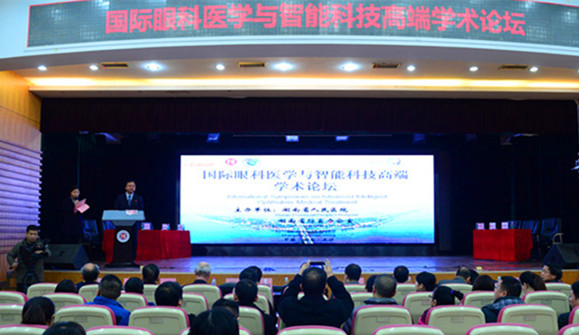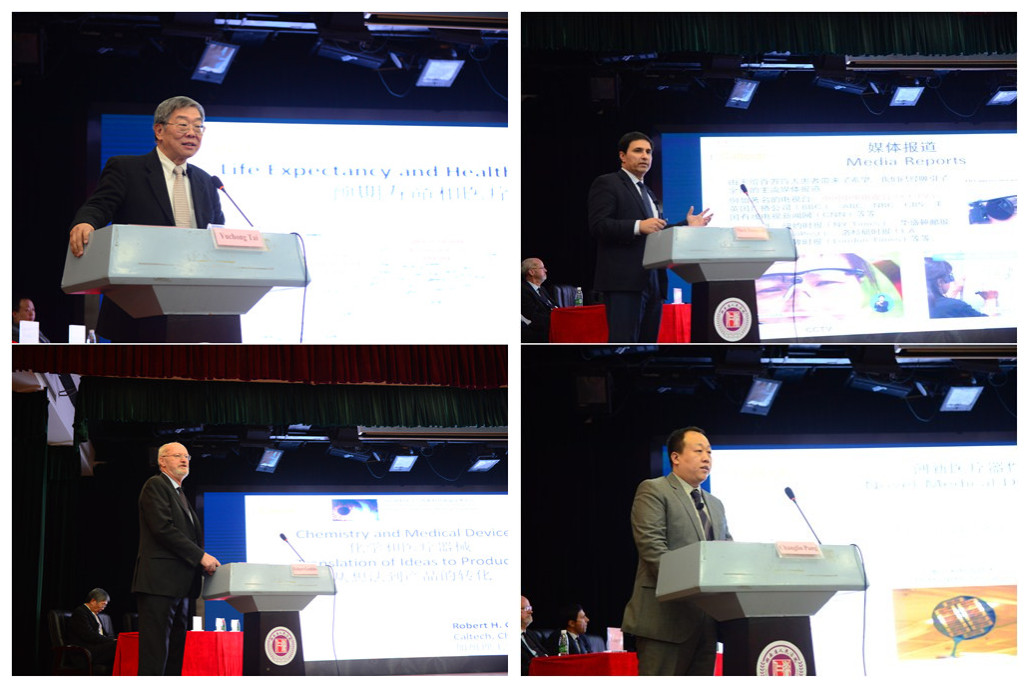
International Ophthalmology and Intelligent Technology High-level Academic Forum was held at the Hunan Provincial People's Hospital on December 19, 2017. Dr. Mark Humayun, Dr. Robert Grubbs, Dr. Yu-Chong Tai, Dr. Changlin Pang, Zhang Jian, Vice Chairman of the Chinese People's Political Consultative Conference of Hunan Province and Chairman of the Federation of Industry and Commerce, Luo Keda, Vice President of the Federation of Industry and Commerce of Hunan Province, Xiang Zhenfei, Chairman of the Board of GOLDEN EYE BIONICS, LLC, Didier Sagan, the intelligent chip manufacturing expert, Lin Yunsheng, the advanced software engineer, Wang Jihua and Xiang Hua of Hunan Provincial People's Hospital attended the meeting.

For humans, more than 70% of the information is received visually. If you lose sight, you will have to be accompanied by darkness. If the human eye is likened to a camera, the retina is the "negative" of the camera. Many tissues of the human body can be healed after injury. Retinal cells, however, do not regenerate, and often lead to severe blindness when damaged. The original retina "negative" is not passive imaging. It also works with other cells and neurons to actively process visual signals and has a "image correction" function. This is beyond the current technology level. Therefore, artificial retina with "intelligent" function is the solution to solve the blindness caused by retina-related diseases. At present, some clinical trials of intelligent retina have been completed in the United States, Germany and Australia, and commercial products have been produced. More than 300 blind people in the world have recovered their sight due to this technology. However, the research on this technology in China is still in the primary stage.
The forum themed "advanced intelligent ophthalmology in the 21st century" was sponsored by Hunan Provincial People's Hospital and Office for the Prevention of Blindness in Hunan Province. Four U. S. experts and provincial ophthalmologists explored the leading topics such as intelligent ophthalmology technology. The forum will promote this technology to Hunan, China and the world, bring hope and light to Chinese patients with blindness caused by age-related macular degeneration and retinitis pigmentosa.
Pro. Duan Guoping, the Director of Ophthalmology in Hunan Provincial People's Hospital, said that age-related macular degeneration is one of the leading causes of blindness among adults in the world. There are currently about 4 million blind people with age-related macular degeneration and another 1.5 million with retina pigmentosa. According to the research report of World Health Organization, the blind caused by age-related macular degeneration account for about 8.7% of that in the world and about 0.5 million people are blinded by age-related macular degeneration each year. Despite the rapid development of ophthalmology and technology, there has been no significant breakthrough in the treatment of such diseases. For these patients, keeping the light is beyond their reach.
The technology of artificial retina is to implant the microelectrode array through intraocular surgery, and transmit the video information of the external camera to the internal implant device by wireless transmission after data conversion. Microelectrodes transmit video information and available nerve cells to the brain through the retinal macular area by electrical stimulation, which enables the blind people to regain their vision. This technique is currently used to restore "useful" vision in patients with age-related macular degeneration and retinitis pigmentosa. The technology of artificial retina has developed rapidly in the world for more than 20 years, but it is still in a relatively blank stage in our country. The introduction and promotion of this technology in Hunan may bring good news to the majority of patients with retina disease.


